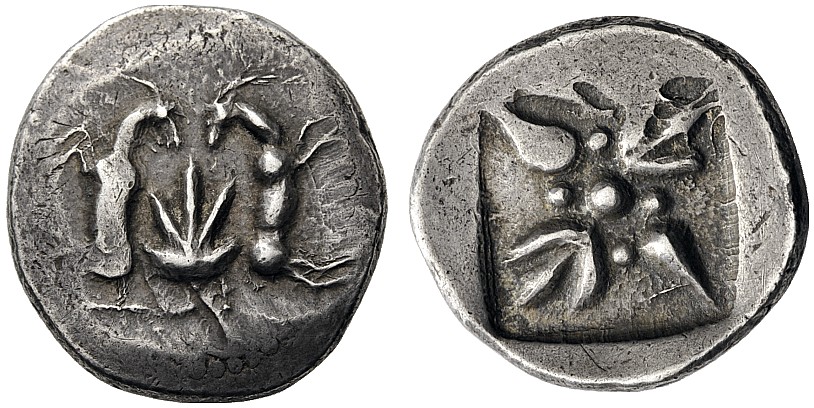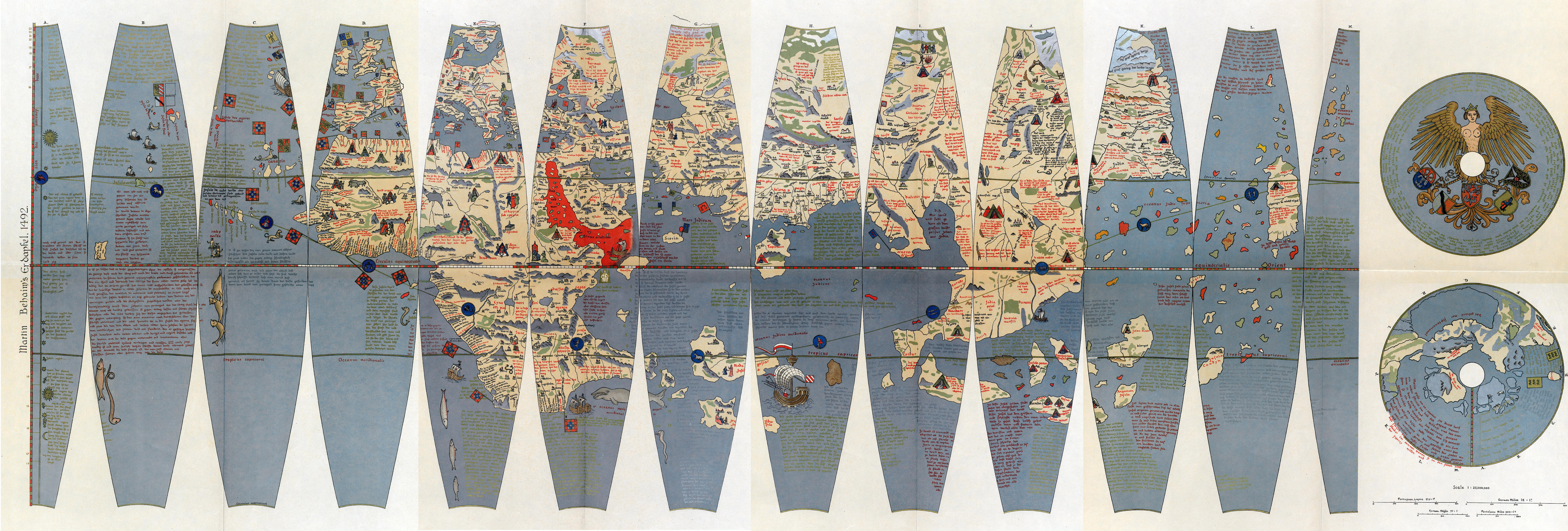|
Chryse (ancient Greek Placename)
Chryse ( grc, Χρύση) is a name occurring in Ancient Greek geography, reported by ancient authors to have referred to the following places: *Chryse (island), a former island in the Mediterranean where, in Greek mythology Philoctetes was bitten by a snake. This island is underwater now. *Chryse and Argyre, one of a pair of legendary islands in the Indian Ocean said to be made of gold and silver *Chryse, a town mentioned in Homer's ''Iliad'', from which Agamemnon took Chryseis *''Chrysē nēsos'' (Golden Island), an ancient poetical name for the island Thasos, for its gold mines *Chryse, a promontory of Lemnos opposite Tenedos Stephanus of Byzantium s. v. ''Khrysē'' * Chryse (Aeolis), a town of ancient Aeolis, now in Turkey * Chryse (Lesbos), Lesbos, a place in Greece * Chryse (Troad), a town of the ancient Troad, now in Turkey *Chryse, Skyros, a village or place in Ancient Greece * Chryse (Caria), a place in the area of Halicarnassus, now in Turkey *Chryse (Hellespont), located ... [...More Info...] [...Related Items...] OR: [Wikipedia] [Google] [Baidu] |
Chryse (island)
Chryse ( el, Χρύση, Khrúsē, Golden), also called Lemnian Chryse, was a small island in the Aegean Sea near Lemnos, mentioned by Homer and Sophocles. By the second century, Pausanias (geographer), PausaniasPausanias, ''Description of Greece'' 8.33.4 and Appian say that it had sunk below the sea. Its location is unknown. The island's main feature was said to be its temple to Apollo, and its patron deity was the goddess Chryse (mythology), Chryse. The Greek archer Philoctetes stopped there on his way to Troy and was bitten by a Viperidae, viper. Lucullus captured three men there in an ambush during the Third Mithridatic War. The island seems to have disappeared by the second century AD. An ancient oracle (written by Onomacritus) may have predicted this end. The ''Description of Greece'' says: Proposed sites An amateur underwater archaeologist claimed to have rediscovered the island in 1960, identifying it with "a sunken land mass known as Kharos Bank, a 10-sq.-mi. area near ... [...More Info...] [...Related Items...] OR: [Wikipedia] [Google] [Baidu] |
Chryse (Troad)
Chryse ( gr, Χρύση), or Chrysa (Χρύσα), was a town of the ancient Troad, mentioned by Pliny as being on the coast north of Cape Lectum Cape Baba ( tr, Baba Burnu) or Cape Lecton ( grc, Λεκτόν), is the westernmost point of the Turkish mainland, making it the westernmost point of Asia. It is located at the village of Babakale ("Father Castle"), Ayvacık, Çanakkale, in the his .... The site of Chryse is located near modern Göztepe. References Populated places in ancient Troad Former populated places in Turkey {{ancientTroad-geo-stub ... [...More Info...] [...Related Items...] OR: [Wikipedia] [Google] [Baidu] |
Pnyx
The Pnyx (; grc, Πνύξ ; ell, Πνύκα, ''Pnyka'') is a hill in central Athens, the capital of Greece. Beginning as early as 507 BC (Fifth-century Athens), the Athenians gathered on the Pnyx to host their popular assemblies, thus making the hill one of the earliest and most important sites in the creation of democracy. The Pnyx is located less than west of the Acropolis and south-west of the Syntagma Square in the centre of Athens. Historical significance The Pnyx was used for popular assemblies in Athens as early as 507 BC, when the reforms of Cleisthenes transferred political power to the citizenry. It was then outside the city proper, but close enough to be convenient. It looks down on the ancient Agora, which was the commercial and social centre of the city. At this site all the great political struggles of Athens of the "Golden Age" were fought out. Pericles, Aristides and Alcibiades spoke here, within sight of the Parthenon, temple of Athena. Here Demosthenes de ... [...More Info...] [...Related Items...] OR: [Wikipedia] [Google] [Baidu] |
Athens
Athens ( ; el, Αθήνα, Athína ; grc, Ἀθῆναι, Athênai (pl.) ) is both the capital and largest city of Greece. With a population close to four million, it is also the seventh largest city in the European Union. Athens dominates and is the capital of the Attica region and is one of the world's oldest cities, with its recorded history spanning over 3,400 years and its earliest human presence beginning somewhere between the 11th and 7th millennia BC. Classical Athens was a powerful city-state. It was a centre for the arts, learning and philosophy, and the home of Plato's Academy and Aristotle's Lyceum. It is widely referred to as the cradle of Western civilization and the birthplace of democracy, largely because of its cultural and political influence on the European continent—particularly Ancient Rome. In modern times, Athens is a large cosmopolitan metropolis and central to economic, financial, industrial, maritime, political and cultural life in Gre ... [...More Info...] [...Related Items...] OR: [Wikipedia] [Google] [Baidu] |
Isle Of Chryse
The Golden Chersonese or Golden Khersonese ( grc, Χρυσῆ Χερσόνησος, ''Chrysḗ Chersónēsos''; la, Chersonesus Aurea), meaning the Golden Peninsula, was the name used for the Malay Peninsula by Greek and Roman geographers in classical antiquity, most famously in Claudius Ptolemy's 2nd-century ''Geography''. Name The earliest references to a fabulous land of gold that could be interpreted as places in South East Asia may be found in Indian literature. In ''Ramayana'', there are mentions of ''Suvarnabhumi'' (Land of Gold) and '' Suvarnadvipa'' (the Golden Island or Peninsula, where ''dvipa'' might refer to either a peninsula or an island) Greek knowledge of lands further to their east improved after the conquests of Alexander the Great, but specific references to places in South East Asia did not appear until after the rise of the Roman Empire. Greek and Roman geographers Eratosthenes, Dionysius Periegetes, and Pomponius Mela had written about a Golden Isle ('' ... [...More Info...] [...Related Items...] OR: [Wikipedia] [Google] [Baidu] |
Gaidaronisi
Chrysi or Chrisi ( el, Χρυσή, Chrysí, lit=golden; also known as Gaidouronisi, el, Γαϊδουρονήσι, Gaïdouronísi, lit=donkey island) is an uninhabited Greek island approximately south of Crete close to Ierapetra in the Libyan Sea. Approximately east of the island is the island of Mikronisi. Administratively these islands fall within the Ierapetra municipality in Lasithi. It contains a small harbour and church, the Church of Saint Nicholas, on its northwestern coast. Tourism It is possible to visit Chrissi by sea from Ierapetra and from Myrtos. There is a nudist beach on the north coast of the island. The highest point on the island is called Kefala ("Head") and it is above sea level. On the western part of the island is the chapel of Saint Nicholas (estimated to date to the 13th century). There are also a salt pan, an old port, some Minoan ruins, a lighthouse and a Roman cemetery. Owing to the shallow waters around Chrissi, snorkelling and diving are popu ... [...More Info...] [...Related Items...] OR: [Wikipedia] [Google] [Baidu] |
Chryse (Bithynia)
Chryse ( gr, Χρύση) was a town of Bithynia, mentioned by Stephanus of Byzantium as being near Chalcedon Chalcedon ( or ; , sometimes transliterated as ''Chalkedon'') was an ancient maritime town of Bithynia, in Asia Minor. It was located almost directly opposite Byzantium, south of Scutari (modern Üsküdar) and it is now a district of the cit .... The site of Chryse is unlocated. References Populated places in Bithynia Former populated places in Turkey Lost ancient cities and towns History of Istanbul Province {{ancientBithynia-geo-stub ... [...More Info...] [...Related Items...] OR: [Wikipedia] [Google] [Baidu] |
Chryse (Hellespont)
Chryse ( gr, Χρύση) was a town on the Hellespont, mentioned by Stephanus of Byzantium as being between Abydus and Ophrynium, which would put it on the Asian side, in ancient Mysia Mysia (UK , US or ; el, Μυσία; lat, Mysia; tr, Misya) was a region in the northwest of ancient Asia Minor (Anatolia, Asian part of modern Turkey). It was located on the south coast of the Sea of Marmara. It was bounded by Bithynia on th .... The site of Chryse is unlocated. References Populated places in ancient Mysia Former populated places in Turkey Lost ancient cities and towns {{ancientMysia-geo-stub ... [...More Info...] [...Related Items...] OR: [Wikipedia] [Google] [Baidu] |
Chryse (Caria)
Chryse ( gr, Χρύση) was a town of ancient Caria, mentioned by Stephanus of Byzantium as being near Halicarnassus Halicarnassus (; grc, Ἁλικαρνᾱσσός ''Halikarnāssós'' or ''Alikarnāssós''; tr, Halikarnas; Carian: 𐊠𐊣𐊫𐊰 𐊴𐊠𐊥𐊵𐊫𐊰 ''alos k̂arnos'') was an ancient Greek city in Caria, in Anatolia. It was located i .... The site of Chryse is unlocated. References Populated places in ancient Caria Former populated places in Turkey Lost ancient cities and towns {{ancientCaria-geo-stub ... [...More Info...] [...Related Items...] OR: [Wikipedia] [Google] [Baidu] |
Skyros
Skyros ( el, Σκύρος, ), in some historical contexts Latinized Scyros ( grc, Σκῦρος, ), is an island in Greece, the southernmost of the Sporades, an archipelago in the Aegean Sea. Around the 2nd millennium BC and slightly later, the island was known as The Island of the Magnetes where the Magnetes used to live and later Pelasgia and Dolopia and later Skyros. At it is the largest island of the Sporades, and has a population of about 3,000 (in 2011). It is part of the regional unit of Euboea. The Hellenic Air Force has a major base in Skyros, because of the island's strategic location in the middle of the Aegean. Municipality The municipality Skyros is part of the regional unit of Euboea. Apart from the island Skyros, it consists of the small inhabited island of Skyropoula and a few smaller uninhabited islands. The total area of the municipality is . Geography The north of the island is covered by a forest, while the south, dominated by the highest mountain, called ... [...More Info...] [...Related Items...] OR: [Wikipedia] [Google] [Baidu] |
Chryse (Lesbos)
Chryse ( grc, Χρύση) was a town of ancient Lesbos Lesbos or Lesvos ( el, Λέσβος, Lésvos ) is a Greek island located in the northeastern Aegean Sea. It has an area of with approximately of coastline, making it the third largest island in Greece. It is separated from Asia Minor by the nar .... The site of Chryse is unlocated. References Populated places in the ancient Aegean islands Former populated places in Greece Ancient Lesbos Lost ancient cities and towns {{AncientAegean-geo-stub ... [...More Info...] [...Related Items...] OR: [Wikipedia] [Google] [Baidu] |
Chryse And Argyre
Chryse and Argyre ( and ) were a pair of legendary islands, located in the Indian Ocean and said to be made of gold (''chrysos'' in Greek) and silver (''argyros''). In Book 6, chapter 23 of his '' Natural History'', concerning the regions near the Indus River, Pliny the Elder (23–79 CE) wrote that "Beyond the mouth of the Indus are the islands of Chryse and Argyre, abounding in metals, I believe; but as to what some persons have stated, that their soil consists of gold and silver, I am not so willing to believe that." Some five or six centuries later, in section XIV.vi.11 of his encyclopedic ''Etymologies'', Isidore of Seville (c. 560–636) repeated much the same information: "Chryse and Argyre are islands situated in the Indian Ocean, so rich in metal that many people maintain these islands have a surface of gold and silver; whence their names are derived." This was almost certainly taken—like much else in the ''Etymologies'', as Isidore freely admitted—directl ... [...More Info...] [...Related Items...] OR: [Wikipedia] [Google] [Baidu] |





